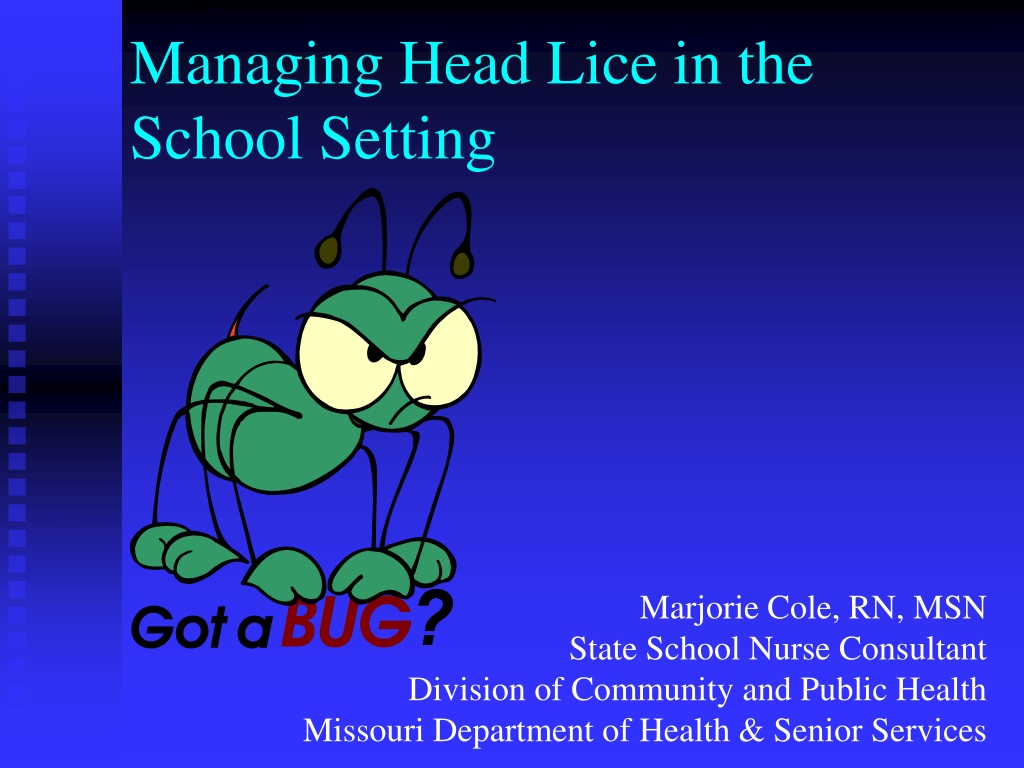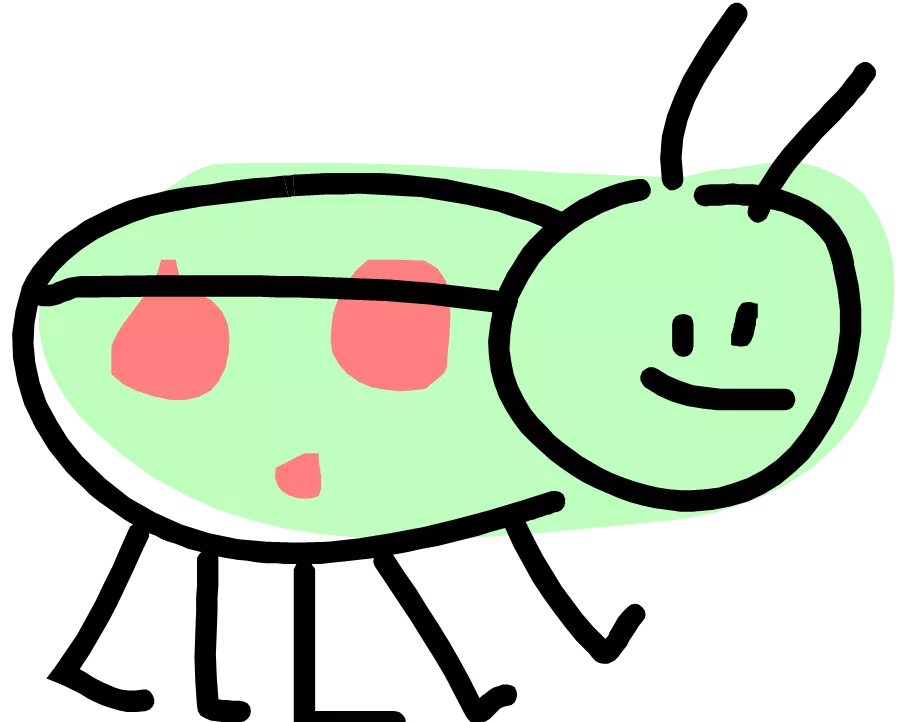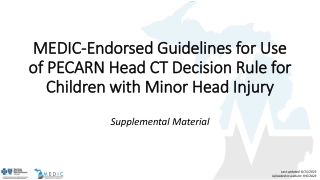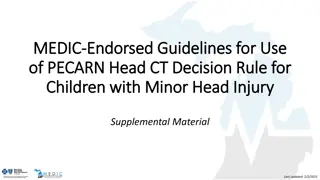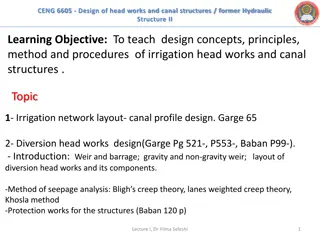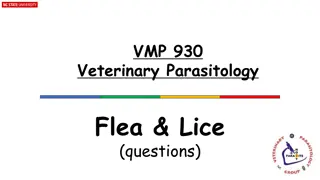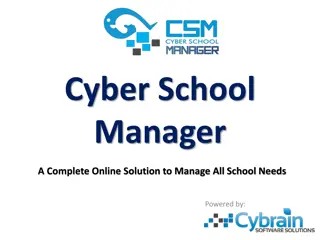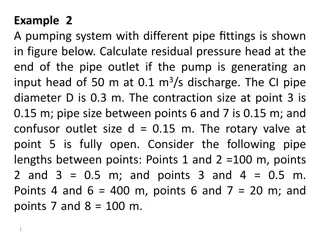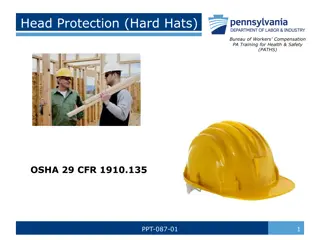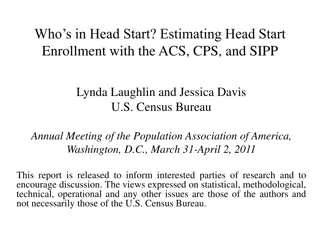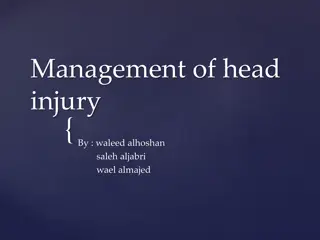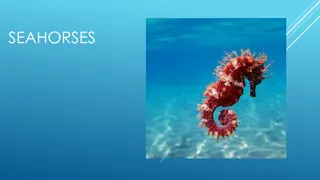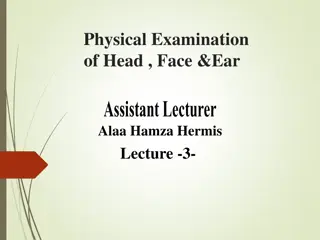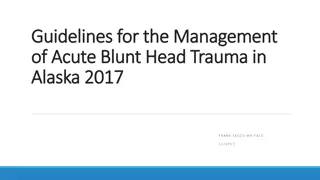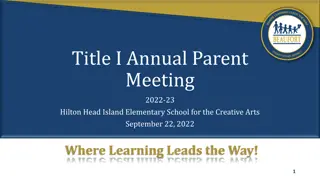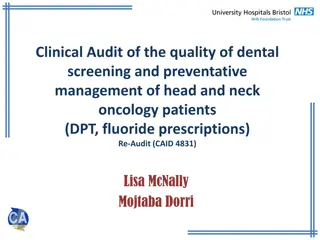Managing Head Lice in School: A Comprehensive Guide
Understand head lice infestation with details on their characteristics, transmission, symptoms, and stages of development. Learn about preventive measures and appropriate responses in a school setting to effectively manage head lice outbreaks.
Uploaded on Oct 01, 2024 | 0 Views
Download Presentation

Please find below an Image/Link to download the presentation.
The content on the website is provided AS IS for your information and personal use only. It may not be sold, licensed, or shared on other websites without obtaining consent from the author. Download presentation by click this link. If you encounter any issues during the download, it is possible that the publisher has removed the file from their server.
E N D
Presentation Transcript
Managing Head Lice in the School Setting Marjorie Cole, RN, MSN State School Nurse Consultant Division of Community and Public Health Missouri Department of Health & Senior Services
What Is Head Lice? A small parasitic insect that lives on the scalp and neck hairs of a human host. Six legs No wings Cannot hop Does not fly
What Is Head Lice? Requires human blood to grow, develop and lay eggs (nits). Cannot survive more than a day without a blood meal. Cannot survive more than a day or so at room temperature.
What Is Head Lice? Not known to transmit infectious agents; Does not discriminate among socioeconomic groups; More commonly found in children of preschool and early elementary age
What Is Head Lice? Girls are infested more often than boys Parents and siblings sometimes acquire Caucasians more frequently than other ethnic groups
Signs and Symptoms Students with head lice are usually asymptomatic Some experience itching from an allergic reaction from the bites or irritation from sores caused by bites
The Facts on Head Lice Three Stages: 1. Nit 2. Nymph 3. Adult
Nit (louse egg) Oval in shape Nits are laid onto the hair shaft, close to the scalp 8-12 days to develop and hatch Eggs that have died or hatched, remain firmly attached to the hair; but will never again produce another louse
Nymph Immature stage of a louse Look like an adult, only smaller and are unable to reproduce Mature into adults about 9-12 days after hatching Must feed on human blood to survive and grow
Adult Louse Difficult to see-move quickly Fewer than a dozen active lice on the head at any time Size of a sesame seed Tan to grayish Adult females live up to 30 days Feed once or more a day. Will die within a day when off the head Lay about 6 eggs a day
How is Lice Transmitted from One Person to Another??
Transmission Head to head contact with an infested person The transmission from hats, combs, pillows, etc is possible but much less likely According to CDC, most transmissions occurs in the home environment. (friends, sleep-overs, camps, etc)
Diagnosis of Head Lice Head lice can be found anywhere in the hair Easiest to locate on the scalp and behind the ears and near the neckline at the back of the neck
Diagnosis of Head Lice Nits are deposited on the hair shaft about 1mm from the scalp Eggs more than of an inch away from the scalp are nearly always hatched and do not, by themselves indicate an active infestation
Transmission of Head Lice Only LIVING LICE can transfer from one person to another Nits cannot be passed onto someone else
Treatment of Head Lice Treatment is recommended only for individuals found with live lice or viable eggs Nits further than inch from head, are probably hatched and no longer viable
Treatment of Head Lice Over the counter lice shampoo Pyrethroid insecticides Directions must be followed exactly Susceptible lice do not die or fall from the hair immediately upon treatment A second treatment may be required in 10 to 14 days
Prescription Lice Shampoo If live lice persist following treatment with over the counter products, parents should discuss with HCP
Alternative Treatments Examples: Petroleum jelly, margarine, mayonnaise, herbal oils, olive oil, and enzyme-based products- no conclusive evidence that are effective ( or necessarily safe)
Treatment of Head Lice Combing with a nit comb can sometimes be effective in removing viable nits and lice Comb daily until no live lice are discovered ( 2 weeks) Recheck in 2-3 weeks after you think they are gone
The Facts on Head Lice The Center for Disease Control published a study (May 2001) which showed that only 9 of 50 children with nits alone (18%) converted to live lice
National Recommendations for School Policy The American Academy of Pediatrics recommends that no healthy child be excluded from or allowed to miss school because of head lice, and that no nit policies for return to school be discouraged
National Recommendations for School Policy The National Association of School Nurses state that nit free policies disrupt the education process and should not be viewed as an essential strategy in the management of head lice
National Recommendations for School Policy Health and Health Care in Schools: Children with nits do not pose an immediate risk to the health of others, therefore, excluding these children from school and requiring them to be treated with pesticidal product is probably excessive .
Managing Head Lice in the Schools When parents of elementary school aged children are surveyed as to what childhood health issues concern them most, head lice usually ranks higher than much more serious conditions.
Managing Head Lice in the Schools School district policies on head lice vary throughout Missouri 97% have no nit policies
Missouri School Survey 91% screen regularly 60% screen at beginning of school year 23% screen monthly 81% screen according to a situation
Head Lice Facts These are insects that CANNOT jump or fly. Their method of movement relies on 6 legs, each of which ends in a claw which can grasp human hair.
The Facts on Head Lice Lice eggs are called nits. They are oval shaped and usually yellow to white. The eggs are attached to the hair with a quick hardening glue that the female louse extracts from her body.
Please Remember Lice don t mount expeditions, striking off to find new heads. They are obligate human parasites, their goal is to stay on the head where they presently live!!!!!
Eggs by themselves without the presence of live lice do not indicate an active infestation. Treatment should ONLY be carried out if live lice are present.
No Scientific Support Harvard s School of Public Health obtained samples from health care professionals and the public of lice and nits . Most samples came from schools. Lice or eggs were present in less thantwo thirds. Less than half had either a louse or potentially viable egg.
The researchers found that over-the-counter medications were used as much in those with active infestations as those without viable lice or eggs. Misdiagnosis leads to the possibility of overuse of pediculocides and inappropriate exclusion from school. The same researchers have found that the kids sitting next to kids with live lice are NOT more likely to get it than anyone else.
Lice are transmitted when there is direct head-to-head contact where LIVE lice are concerned. Nits cannot be passed to another person. According to the Center For Disease Control most transmission occurs in the home environment. (friends, sleep-overs, camps, etc..)
The greatest harm associated with head lice is from well-intentioned but misguided use of caustic or toxic substances to eliminate the lice Remember: we need to base practices on scientific evidence, not fear and hysteria.
